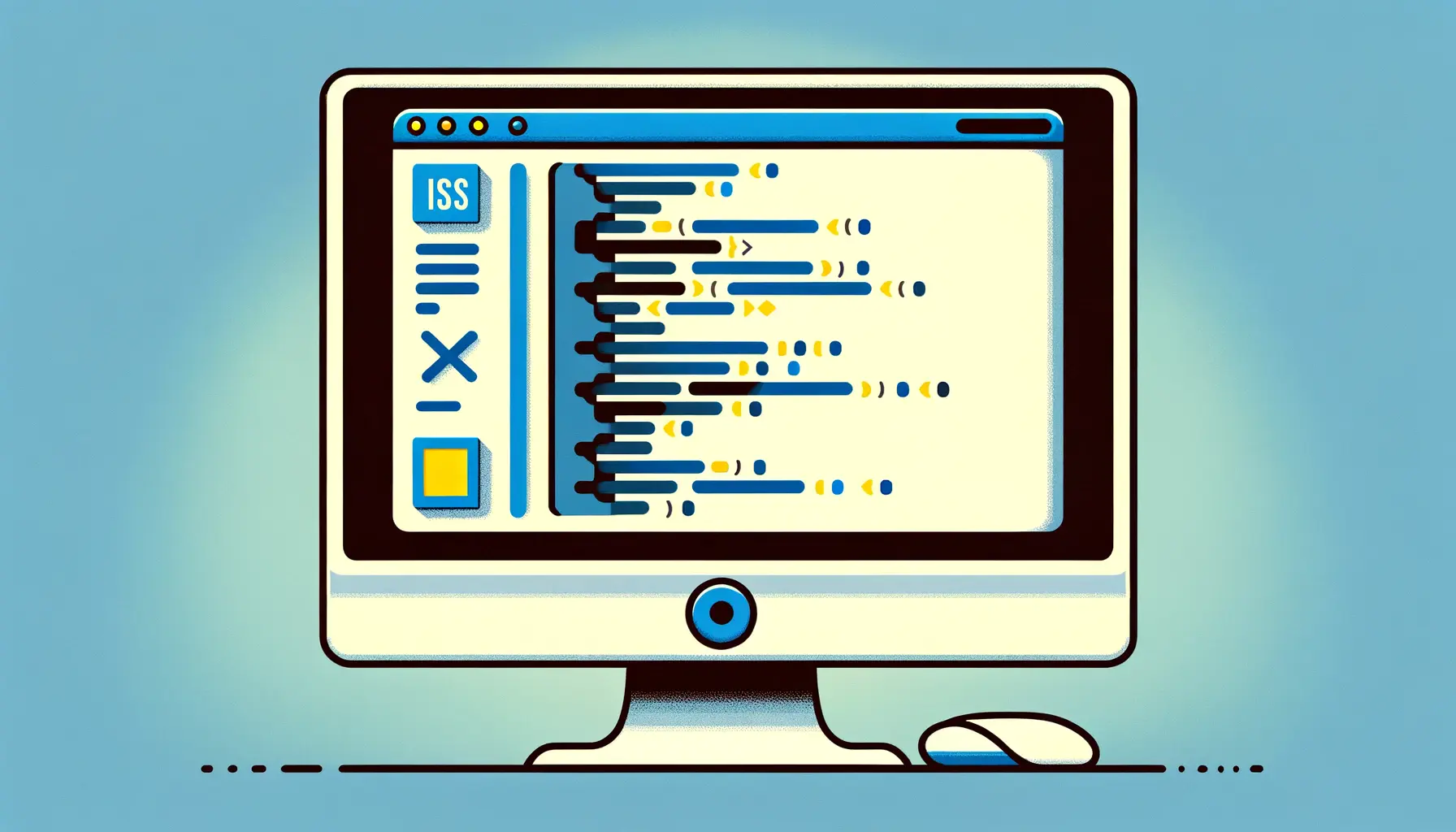As the digital landscape evolves, the complexity of web applications continues to grow.
This complexity can lead to bloated JavaScript bundles, which negatively impact the performance and user experience of web applications.
In this context, code splitting emerges as a crucial optimization technique for modern JavaScript projects.
By understanding and implementing code splitting, developers can significantly improve the loading time and responsiveness of their applications, enhancing the overall user experience.
Code splitting is a strategy that involves dividing a JavaScript application into smaller chunks, which are then loaded on demand or in parallel.
This approach allows for the reduction of the initial load time of web applications by minimizing the amount of code that needs to be parsed and executed upfront.
As web applications grow in size and complexity, the importance of code splitting cannot be overstated.
It not only optimizes performance but also facilitates better resource management and accelerates development cycles.
- Understanding Code Splitting
- Implementing Code Splitting in Your Projects
- Challenges and Best Practices in Code Splitting
- Code Splitting with React and Webpack
- Code Splitting in Single Page Applications (SPAs)
- Advanced Techniques and Considerations for Code Splitting
- Code Splitting and SEO: Maximizing Visibility
- Conclusion: Embracing Code Splitting for Enhanced Web Performance
- FAQs on Code Splitting in JavaScript Projects
Understanding Code Splitting
At its core, code splitting is about enhancing the performance of web applications by breaking down large JavaScript files into smaller, manageable pieces.
These pieces, or chunks, can then be loaded asynchronously or on demand, ensuring that users only download the code necessary for the current view or action.
This method contrasts with the traditional approach of loading the entire JavaScript bundle at once, regardless of the user’s immediate needs.
Implementing code splitting can significantly reduce the initial load time of a web application, leading to faster, more responsive user experiences.
This is particularly important in today’s fast-paced digital environment, where users expect quick and seamless interactions with web applications.
By prioritizing the loading of essential code and deferring the rest, developers can meet these expectations and improve the performance metrics of their projects.
Benefits of Code Splitting
The benefits of code splitting extend beyond improved load times.
By dividing a JavaScript bundle into smaller chunks, developers can also achieve more efficient caching.
Since only modified chunks need to be re-downloaded after an update, users can benefit from quicker subsequent visits.
Additionally, code splitting makes it easier to manage and debug large codebases, as developers can isolate and focus on specific parts of the application without being overwhelmed by its entirety.
Another significant advantage is the positive impact on search engine optimization (SEO).
Faster load times and improved performance metrics, such as First Contentful Paint (FCP) and Time to Interactive (TTI), are critical factors in search engine rankings.
By optimizing these aspects through code splitting, developers can enhance their application’s visibility and attract more users.
Code splitting is not just a performance optimization strategy; it’s a fundamental approach to building scalable and maintainable web applications in the modern web development landscape.
Implementing Code Splitting in Your Projects
Integrating code splitting into a JavaScript project requires a strategic approach and an understanding of the tools and techniques available.
The process varies depending on the project’s complexity, the frameworks and libraries in use, and the specific goals of the optimization.
However, the fundamental steps to implement code splitting share common principles that can guide developers through the optimization of their applications.
One of the key tools in implementing code splitting is Webpack, a static module bundler for modern JavaScript applications.
Webpack analyzes the application and efficiently divides the code into chunks based on the configuration provided.
This section explores the basic steps and considerations for implementing code splitting, emphasizing the role of Webpack and other tools in the process.
Steps to Implement Code Splitting
- Assess Your Application: Begin by analyzing your application’s structure and identifying the components or modules that can be loaded independently. This assessment will help you determine the most effective points for splitting your code.
- Configure Your Bundler: Use Webpack or a similar module bundler to configure code splitting. Webpack offers features like dynamic imports and the SplitChunks plugin, which automate the splitting process based on certain criteria.
- Dynamic Imports: Implement dynamic imports in your application. This JavaScript feature allows you to import modules on demand, creating separate chunks that are loaded only when needed.
- Optimize Chunk Loading: Decide on a loading strategy for your chunks. You can choose to preload important chunks or lazy-load non-essential modules to further improve performance.
- Test and Refine: After implementing code splitting, thoroughly test your application to ensure that all modules are loading correctly and that performance has improved. Use tools like Lighthouse to measure the impact of code splitting on your application’s performance metrics.
Tools and Libraries for Code Splitting
While Webpack is a cornerstone tool for code splitting, several other tools and libraries can facilitate the process, especially in applications built with specific JavaScript frameworks like React or Vue.js.
Here are some notable tools:
- React.lazy and Suspense: For React applications, the React.lazy function and Suspense component provide built-in support for code splitting and lazy loading of components.
- Vue.js Async Components: Vue.js offers a similar mechanism through its support for asynchronous components, allowing developers to define components that are loaded only when needed.
- React Loadable: A higher-order component for loading components with promises, React Loadable offers more flexibility and features than React.lazy, such as loading indicators and error handling.
Exploring the tools and techniques for code splitting is crucial for modern web development. By leveraging these resources, developers can significantly enhance the performance and user experience of their applications.
Challenges and Best Practices in Code Splitting
While code splitting is a powerful technique for improving web application performance, it comes with its own set of challenges.
Developers must navigate these potential pitfalls to effectively implement code splitting without compromising the application’s functionality or user experience.
Understanding these challenges is the first step toward developing strategies to overcome them.
Moreover, adhering to best practices in code splitting can guide developers in optimizing their applications efficiently.
These practices ensure that the benefits of code splitting are fully realized, from reduced load times to improved app performance.
This section delves into the common challenges faced during code splitting and outlines best practices for successful implementation.
Common Challenges in Code Splitting
- Complex Configuration: Setting up code splitting, especially in large and complex applications, can be daunting. The configuration process requires a deep understanding of the bundler’s capabilities and the application’s architecture.
- Over-splitting: Creating too many small chunks can lead to excessive HTTP requests, negating the performance benefits of code splitting. Finding the right balance between chunk size and the number of requests is crucial.
- Dependency Management: Managing dependencies between chunks can become complicated, leading to issues such as duplicate code across chunks or missing dependencies at runtime.
- Browser Compatibility: Older browsers may not support features necessary for code splitting, such as dynamic imports. Ensuring compatibility through polyfills or fallback mechanisms is essential for a consistent user experience.
Best Practices for Code Splitting
- Analyze and Plan: Use tools like Webpack Bundle Analyzer to understand how your code is bundled. This analysis can help identify the best points for splitting your code.
- Strategic Splitting: Focus on splitting code at the routes level for single-page applications or around large, independent features that are not needed immediately.
- Lazy Load Strategically: Lazy load routes, components, or libraries that are not critical to the initial rendering of the application. This ensures that users are not waiting for unnecessary code to load.
- Use Preloading: Preload important chunks that will be needed soon after the initial load, to speed up navigation to subsequent pages or features.
- Test Performance Impact: Regularly test the performance impact of code splitting on your application using tools like Lighthouse. This helps ensure that your efforts are actually improving the user experience.
Effective code splitting requires careful planning and continuous optimization. By addressing the challenges and following best practices, developers can enhance application performance without sacrificing quality or user experience.
Code Splitting with React and Webpack
React, one of the most popular JavaScript libraries for building user interfaces, provides robust support for code splitting, making it easier for developers to implement this performance optimization technique in their projects.
Coupled with Webpack, React developers have a powerful set of tools at their disposal to efficiently split code and improve the loading times of their applications.
This section explores how to leverage React and Webpack for effective code splitting, highlighting the steps and considerations involved in the process.
Webpack serves as the backbone for module bundling in many React applications, offering features that facilitate code splitting.
React’s dynamic import syntax, along with the React.lazy function and Suspense component, simplifies the implementation of code splitting, allowing developers to focus on building fast and responsive applications.
Dynamic Imports in React
Dynamic imports are a cornerstone of code splitting in React applications.
By using the import() syntax, React developers can define components that should be loaded lazily, meaning they are only loaded when needed.
This approach significantly reduces the size of the initial JavaScript bundle loaded by the browser, leading to faster load times and a better user experience.
To implement dynamic imports in React, developers can use the React.lazy function in conjunction with Suspense.
React.lazy allows you to render a dynamic import as a regular component, while Suspense lets you specify a loading indicator for the time it takes to load the component.
This combination ensures that users have a smooth experience, even as components are being loaded on demand.
Configuring Webpack for Code Splitting
Webpack’s configuration plays a crucial role in optimizing code splitting in React applications.
The bundler’s SplitChunks plugin can automatically split vendor libraries from application code or split code based on various criteria such as chunk size or entry points.
Configuring Webpack to take advantage of these features requires an understanding of the options available and how they align with the application’s architecture and performance goals.
Developers should carefully configure the SplitChunks plugin to ensure that chunks are optimally sized and loaded efficiently.
This might involve setting maximum and minimum size thresholds for chunks, specifying entry points for dynamic imports, or determining which chunks should be preloaded or prefetched to improve performance further.
Combining React’s support for dynamic imports and lazy loading with Webpack’s bundling and code splitting features allows developers to significantly enhance the performance of their React applications.
Code Splitting in Single Page Applications (SPAs)
Single Page Applications (SPAs) have become increasingly popular due to their ability to offer a smooth, dynamic user experience akin to desktop applications.
However, SPAs can suffer from slow initial load times as the browser must download, parse, and execute large JavaScript bundles before the application becomes interactive.
Code splitting is a critical strategy in optimizing the performance of SPAs by reducing the initial load time and progressively loading the rest of the application as needed.
In the context of SPAs, code splitting must be implemented thoughtfully to ensure that users are not hindered by long wait times or jarring transitions between views.
This section outlines how to apply code splitting effectively in SPAs, focusing on routing-based splitting and the use of frameworks like React and Vue.js to facilitate this process.
Routing-Based Code Splitting
Routing-based code splitting is one of the most effective strategies for SPAs.
It involves splitting the application’s code by route, so that the code for each page or view is loaded only when the user navigates to that page.
This approach can significantly reduce the amount of code loaded during the initial visit, improving load times and resource utilization.
Here’s how to implement routing-based code splitting:
- Identify Routes: Begin by identifying the different routes in your SPA. Each route typically corresponds to a different view or component in the application.
- Apply Dynamic Imports: Use dynamic imports to load the component for each route. In React, this can be achieved using the React.lazy function and Suspense component. Vue.js offers similar functionality through async components.
- Configure Webpack: Ensure your Webpack configuration supports code splitting. Use the SplitChunks plugin to automate the creation of chunks based on routes and other criteria.
- Optimize Loading Strategy: Decide on a loading strategy for your chunks. Consider lazy loading for non-critical routes and preloading or prefetching for routes that the user is likely to visit next.
Frameworks and Libraries for SPA Code Splitting
Several JavaScript frameworks and libraries offer built-in support or plugins to simplify the implementation of code splitting in SPAs.
Here are some key tools:
- React: Offers React.lazy for component lazy loading and supports dynamic imports out of the box.
- Vue.js: Supports async components for lazy loading and allows for easy integration with Webpack’s code splitting features.
- Angular: Provides lazy loading of modules through its routing configuration, enabling developers to specify which modules should be loaded for each route.
Routing-based code splitting is a game-changer for SPAs, enabling faster initial load times and a more responsive user experience. By leveraging the capabilities of modern JavaScript frameworks and Webpack, developers can create highly performant SPAs that delight users.
Advanced Techniques and Considerations for Code Splitting
As developers become more proficient with code splitting, exploring advanced techniques and considerations can further optimize application performance and user experience.
Beyond the basic implementation, there are nuanced strategies that can be employed to fine-tune how and when code is loaded.
This section delves into some of these advanced techniques, offering insights into how to leverage code splitting to its fullest potential.
Understanding the intricacies of these advanced techniques requires a solid grasp of the underlying principles of code splitting.
It’s also essential to continuously monitor the impact of these strategies on your application’s performance, making adjustments as necessary to achieve the best results.
Preloading and Prefetching
Preloading and prefetching are two techniques that can complement code splitting by strategically loading future resources.
Preloading instructs the browser to load certain resources early in the page load process, even if they are not needed immediately.
Prefetching, on the other hand, loads resources during idle time, in anticipation of their future use.
Here’s how to implement these techniques:
- Preloading: Use Webpack’s
/* webpackPreload: true */magic comment to mark specific dynamic imports for preloading. - Prefetching: Similarly,
/* webpackPrefetch: true */can be used to indicate that a resource should be prefetched. - Strategic Use: Apply preloading for resources needed in the current route but deferred, like a hidden modal. Prefetch resources likely to be needed in subsequent routes.
Smart Chunking Strategies
Effectively splitting your code into chunks requires a strategy that balances the size of each chunk with the number of total requests.
Smart chunking involves creating chunks that are neither too large (to avoid long parse and execute times) nor too small (to prevent an excessive number of HTTP requests).
Considerations for smart chunking include:
- Vendor Chunking: Separate third-party libraries into a vendor chunk that changes less frequently than application code.
- Common Chunk: Use Webpack’s SplitChunks plugin to create a common chunk for code shared across multiple routes or components.
- Dynamic Splitting: Dynamically split code based on route usage and user behavior to optimize load times for the most frequently accessed content.
Monitoring and Optimization
Continuous monitoring and optimization are crucial for maintaining the performance benefits of code splitting.
Use performance monitoring tools to track the impact of code splitting on key metrics like load time, time to interactive, and overall user satisfaction.
Regularly review chunk sizes and loading strategies to identify opportunities for improvement.
Adjustments may include refining chunk boundaries, changing preloading or prefetching strategies, or updating the criteria for dynamic imports.
Assuming that code splitting is a set-it-and-forget-it solution is a common misconception. Effective code splitting requires ongoing monitoring and optimization to adapt to changes in application structure and user behavior.
Code Splitting and SEO: Maximizing Visibility
Code splitting not only enhances the performance and user experience of web applications but also plays a significant role in search engine optimization (SEO).
In the digital age, where visibility on search engines can dictate the success of a web application, optimizing for SEO is paramount.
The speed and efficiency gained through code splitting can positively impact a site’s ranking on search engine results pages (SERPs), making it a crucial consideration for developers and SEO specialists alike.
Understanding the relationship between code splitting, page load times, and SEO helps in crafting strategies that align with both performance optimization and search engine visibility goals.
This section explores how code splitting contributes to SEO and outlines strategies to maximize its benefits for improving a site’s search engine ranking.
Impact of Code Splitting on SEO
Search engines, notably Google, prioritize sites that offer a fast and efficient user experience.
Page speed is a direct ranking factor, influencing where your site appears in search results.
By reducing load times through code splitting, you can improve your site’s SEO performance in several ways:
- Improved Page Speed: Faster load times directly contribute to better rankings, as search engines favor sites that load quickly.
- Enhanced User Engagement: A faster site reduces bounce rates and encourages users to spend more time exploring your content, both of which are positive signals to search engines.
- Increased Indexability: Efficiently loading pages are more easily crawled and indexed by search engine bots, ensuring that all your content is discoverable.
SEO Best Practices with Code Splitting
To maximize the SEO benefits of code splitting, it’s essential to implement it alongside other SEO best practices.
Here are some strategies to consider:
- Optimize Critical Rendering Path: Focus on loading essential resources first to quickly render the above-the-fold content, improving perceived performance.
- Use Server-Side Rendering (SSR): For JavaScript-heavy applications, SSR can ensure that search engine bots effectively crawl and index your content, even with dynamic imports.
- Implement Progressive Web App (PWA) Techniques: Combining code splitting with PWA strategies like service workers can further enhance loading times and offline capabilities, contributing to a better user experience and SEO.
Integrating code splitting with a comprehensive SEO strategy requires a holistic approach to web development, where performance optimization and search engine visibility are considered at every stage of the design and development process.
By prioritizing both, developers can create web applications that not only perform exceptionally well but also rank higher in search results, attracting more traffic and engagement.
Leveraging code splitting as part of your SEO strategy can significantly enhance your web application’s visibility and user engagement, leading to higher search rankings and increased traffic.
Conclusion: Embracing Code Splitting for Enhanced Web Performance
The journey through the intricacies of code splitting reveals its undeniable value in modern web development.
As applications grow in complexity and size, the need for efficient, performance-optimized solutions becomes paramount.
Code splitting emerges as a beacon of efficiency, offering a pathway to improved application performance, user experience, and SEO rankings.
By strategically dividing application code into smaller, manageable chunks that are loaded on demand, developers can significantly reduce initial load times, enhance user engagement, and boost the overall performance of their web applications.
The Future of Web Development with Code Splitting
Looking ahead, the role of code splitting in web development is set to become even more critical.
As user expectations for fast, responsive web applications continue to rise, the pressure on developers to deliver optimized experiences increases.
Code splitting, with its direct impact on load times and performance, stands out as a key strategy in meeting these expectations.
Furthermore, as search engines increasingly prioritize user experience metrics, the SEO benefits of code splitting provide an additional incentive for its adoption.
Key Takeaways
- Code splitting is essential for optimizing the performance of modern web applications, reducing initial load times and improving user experience.
- Frameworks and tools like React, Vue.js, and Webpack offer built-in support for code splitting, simplifying its implementation.
- Advanced techniques such as preloading, prefetching, and smart chunking strategies can further enhance the benefits of code splitting.
- The positive impact of code splitting on SEO underscores its importance in a comprehensive web development strategy.
In conclusion, code splitting represents a pivotal technique in the web developer’s toolkit, offering a scalable solution to the challenges of modern web application development.
Its benefits extend beyond performance optimization, touching on crucial aspects of user satisfaction and search engine visibility.
As we look to the future of web development, embracing code splitting and continuously exploring its potential will be key to building faster, more efficient, and more engaging web applications.
Quality web design is key for a great website! Check out our service page to partner with an expert web design agency.
FAQs on Code Splitting in JavaScript Projects
Explore commonly asked questions about code splitting to enhance your JavaScript projects.
Code splitting is a technique that divides a JavaScript application into smaller chunks, which are loaded as needed, improving performance and load times.
It reduces the initial load time of web applications by loading only the necessary code upfront, enhancing user experience and SEO.
By improving load times and page speed, code splitting positively impacts SEO, contributing to higher search engine rankings.
Yes, modern frameworks like React support code splitting through dynamic imports and tools like React.lazy and Suspense.
Webpack is a key tool for code splitting, offering features like dynamic imports and the SplitChunks plugin for efficient bundling.
Identify application routes or components that can be loaded independently, focusing on user flow and critical rendering paths.
Challenges include complex configuration, managing dependencies, and ensuring compatibility across browsers and devices.
Yes, best practices include analyzing application structure, using dynamic imports wisely, and optimizing chunk sizes for balance.













